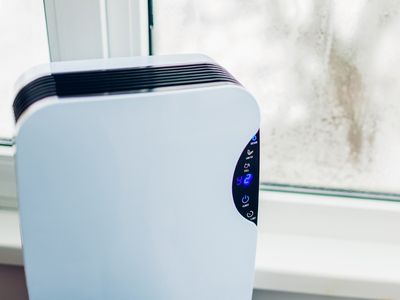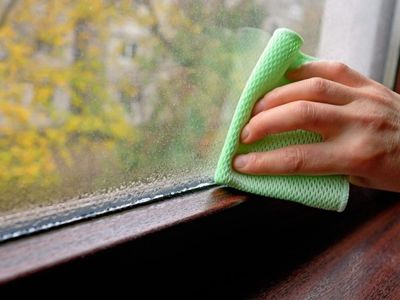What Is Humidity?
Humidity is essentially the measure of water vapor in the air. Most commonly referred to as relative humidity, this measure is generally expressed as a percentage, with 100% being the maximum amount of water vapor the air can hold at a given temperature. Beyond that maximum limit, the vapor condenses into liquid.
Warmer air can hold more water vapor than cold air, hence why it’s called “relative” humidity. 50% humidity will feel a lot muggier on a hot summer day than on a frigid winter morning because the actual amount of vapor in the air is higher in hotter weather.
The ideal indoor humidity level is between 30-60%. Going above or below can have negative effects on the home and the health of everyone in it. For example, excessive humidity can lead to mold growth, the propagation of bacteria, and warped or rotted wood. So it benefits homeowners to understand and manage their home’s humidity levels. That’s where a dehumidifier comes in.
What Do Dehumidifiers Do?

Refrigerative dehumidifiers draw air over metal coils filled with chemical refrigerant that cools the air. As the air cools, its relative humidity rises to 100% (since cold air can’t hold as much moisture), and the water vapor turns into condensation on the coils. The dry air is then heated to its former temperature by a second set of coils and blown back into the surrounding space. A home’s air conditioner does the same thing, except it doesn’t heat the air back up before blowing it into the house.
Desiccant dehumidifiers are less common but still quite effective. These blow air over a desiccant such as silica gel, which naturally absorbs moisture from the air without having to cool it. In both types of dehumidifiers, the captured moisture is typically drained into a basin that needs to be periodically emptied except for whole-home dehumidifiers, which are installed in tandem with the home’s HVAC system and feature a condensate drain line that releases the water outside.
How To Tell if the Home Needs a Dehumidifier

- Condensation on windows.
- Damp carpet or upholstery.
- Visible mold growth.
- Musty smell or mildew odor.
- Warped wood or drywall.
- Bubbling paint or wallpaper.
- Chips, crackers, or cookies get stale/soft days after opening.
- Bread, fruit or other perishables get moldy or spoil faster than normal.
If homeowners notice any of these signs, it’s time to get a dehumidifier before the excess moisture causes further damage.
Benefits of a Dehumidifier
Whether a portable or whole-house model, a dehumidifier can be a game-changing addition to the home. Controlling indoor humidity levels with a dehumidifier can:
- Improve indoor air quality by preventing harmful mold and bacteria growth and making the air easier to breathe.
- Discourage pests such as dust mites and termites (which thrive in moist environments).
- Protect the home and belongings from moisture damage. Hardwood floors, furniture, electronics, and musical instruments will last longer and remain in good condition with appropriate humidity levels.
- Make the home more comfortable.
- Help food last longer and keep its desired texture.
- Prevent musty odors.
With all these benefits, it’s easy to see why a dehumidifier is a good idea in homes with high humidity. Homeowners who suspect they may need to reduce their home’s indoor moisture levels would do well to contact a trusted HVAC technician to determine what kind of dehumidifier is right for them!
About Stonebridge Heating & Air Conditioning
Stonebridge Heating & Air Conditioning has over 20 years of experience serving the residents of Tyler, TX, and the surrounding areas. They offer straightforward pricing, trustworthy technicians, and top-of-the-line customer service. Call them today for dehumidifier services in Tyler, TX.
[press_release_images][/press_release_images]
[press_release_distributions id=”122524″][/press_release_distributions]



